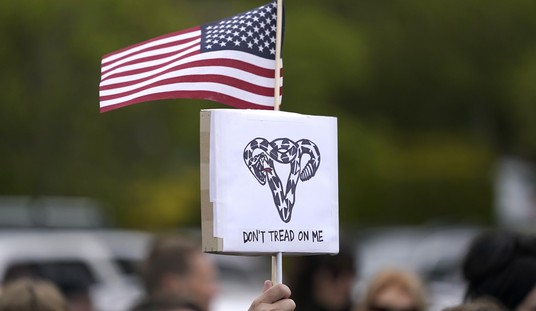WASHINGTON -- A corollary of Murphy's Law ("If something can go wrong, it will") is: "Things are worse than they can possibly be." Energy Secretary Steven Chu, an atomic physicist, seems to embrace that corollary but ignores Gregg Easterbrook's "Law of Doomsaying": Predict catastrophe no sooner than five years hence but no later than 10 years away, soon enough to terrify but distant enough that people will forget if you are wrong.

Chu recently told the Los Angeles Times that global warming might melt 90 percent of California's snowpack, which stores much of the water needed for agriculture. This, Chu said, would mean "no more agriculture in California," the nation's leading food producer. Chu added: "I don't actually see how they can keep their cities going."
No more lettuce or Los Angeles? Chu likes predictions, so here is another: Nine decades hence, our great-great-grandchildren will add the disappearance of California artichokes to the list of predicted planetary calamities that did not happen. Global cooling recently joined that lengthening list.
In the 1970s, "a major cooling of the planet" was "widely considered inevitable" because it was "well established" that the Northern Hemisphere's climate "has been getting cooler since about 1950" (The New York Times, May 21, 1975). Although some disputed that the "cooling trend" could result in "a return to another ice age" (the Times, Sept. 14, 1975), others anticipated "a full-blown 10,000-year ice age" involving "extensive Northern Hemisphere glaciation" (Science News, March 1, 1975, and Science magazine, Dec. 10, 1976, respectively). The "continued rapid cooling of the Earth" (Global Ecology, 1971) meant that "a new ice age must now stand alongside nuclear war as a likely source of wholesale death and misery" (International Wildlife, July 1975). "The world's climatologists are agreed" that we must "prepare for the next ice age" (Science Digest, February 1973). Because of "ominous signs" that "the Earth's climate seems to be cooling down," meteorologists were "almost unanimous" that "the trend will reduce agricultural productivity for the rest of the century," perhaps triggering catastrophic famines (Newsweek cover story, "The Cooling World," April 28, 1975). Armadillos were fleeing south from Nebraska, heat-seeking snails were retreating from central European forests, the North Atlantic was "cooling down about as fast as an ocean can cool," glaciers had "begun to advance" and "growing seasons in England and Scandinavia are getting shorter" (Christian Science Monitor, Aug. 27, 1974).
Recommended
Speaking of experts, in 1980 Paul Ehrlich, a Stanford scientist and environmental Cassandra who predicted calamitous food shortages by 1990, accepted a bet with economist Julian Simon. When Ehrlich predicted the imminent exhaustion of many nonrenewable natural resources, Simon challenged him: Pick a "basket" of any five such commodities, and I will wager that in a decade the price of the basket will decline, indicating decreased scarcity. Ehrlich picked five metals -- chrome, copper, nickel, tin and tungsten -- that he predicted would become more expensive. Not only did the price of the basket decline, the price of all five declined.
An expert Ehrlich consulted in picking the five was John Holdren, who today is President Obama's science adviser. Credentialed intellectuals, too -- actually, especially -- illustrate Montaigne's axiom: "Nothing is so firmly believed as what we least know."
As global levels of sea ice declined last year, many experts said this was evidence of man-made global warming. Since September, however, the increase in sea ice has been the fastest change, either up or down, since 1979, when satellite record-keeping began. According to the University of Illinois' Arctic Climate Research Center, global sea ice levels now equal those of 1979.
An unstated premise of eco-pessimism is that environmental conditions are, or recently were, optimal. The proclaimed faith of eco-pessimists is weirdly optimistic: These optimal conditions must and can be preserved or restored if government will make us minimize our carbon footprints, and if government will "remake" the economy.
Because of today's economy, another law -- call it the Law of Clarifying Calamities -- is being (redundantly) confirmed. On graphs tracking public opinion, two lines are moving in tandem and inversely: The sharply rising line charts public concern about the economy, the plunging line follows concern about the environment. A recent Pew Research Center poll asked which of 20 issues should be the government's top priorities. Climate change ranked 20th.
Real calamities take our minds off hypothetical ones. Besides, according to the U.N.'s World Meteorological Organization, there has been no recorded global warming for more than a decade, or one-third of the span since the global cooling scare.

























Join the conversation as a VIP Member